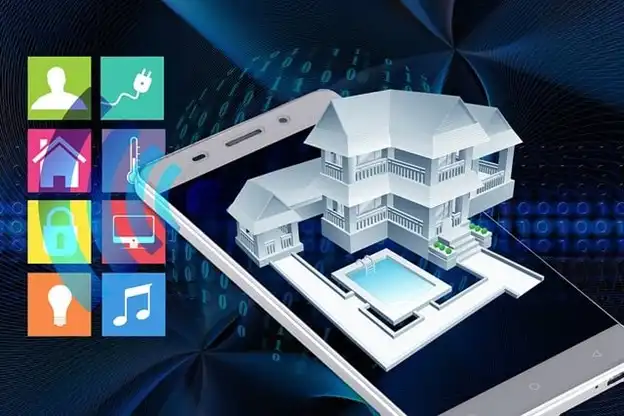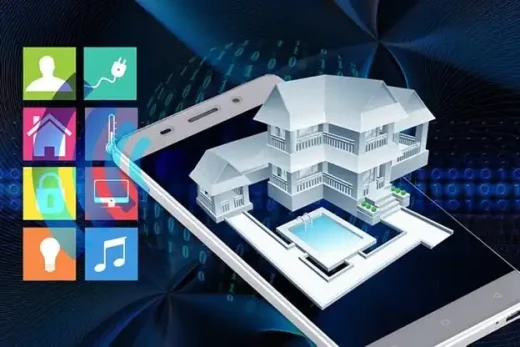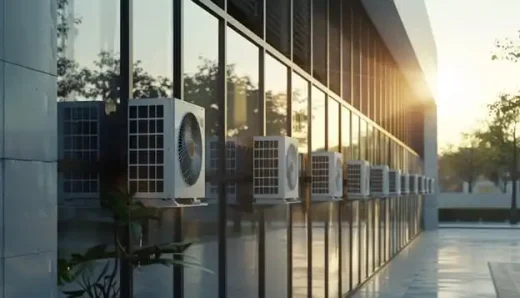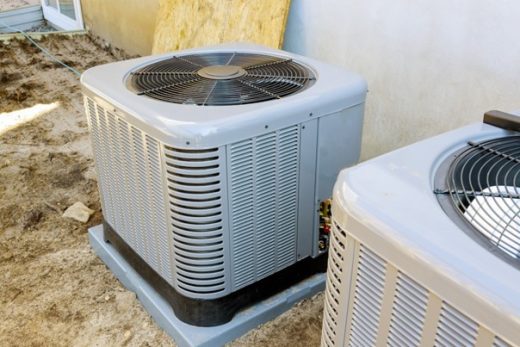How smart HVAC technology enhances modern architectural design, Heating ventilation and air conditioning maintenance
How Smart HVAC Technology Enhances Modern Architectural Design
post updated 21 April 2025
In today’s age, where architecture and comfort need to blend seamlessly, HVAC (Heating, Ventilation, and Air Conditioning) systems have transformed. These systems are evolving beyond essential functions and becoming highly intelligent, data-driven networks that enhance modern buildings’ comfort, efficiency, and sustainability. This transformation is not just about upgrading technology; it’s about redefining the role of HVAC in architecture to align with the aesthetics, sustainability goals, and advanced functionalities expected in contemporary spaces.
7 November 2024
Seamless Integration with Architectural Aesthetics
Smart HVAC systems are designed to blend with architectural aesthetics, providing sleek, compact, and modular designs that are easy to integrate into modern spaces. Traditional HVAC units are often bulky and require extensive ductwork that can disrupt a space’s visual appeal. With smart HVAC technology, designers can now choose from a range of compact and aesthetically pleasing units that seamlessly blend into the building’s architecture, such as ductless systems or hidden units with discrete vents.
In addition, advanced HVAC systems allow architects to design open-concept spaces with fewer structural obstructions. For instance, modular HVAC units can be installed in the ceiling or walls, freeing up valuable square footage. This flexibility in design promotes a minimalist aesthetic, aligning with modern architectural trends that prioritize openness and simplicity. HVAC professionals offer specialized services, allowing your home to maintain a sleek and stylish look.
Enhanced Energy Efficiency and Sustainability
A significant advantage of smart HVAC technology is its ability to reduce energy consumption through advanced control systems and sensors. These systems use algorithms and data analytics to optimize heating and cooling based on real-time occupancy, weather forecasts, and building usage patterns. This helps ensure energy is not wasted in unused spaces, minimizing the building’s environmental footprint.
For example, smart thermostats can learn occupants’ habits, automatically adjusting temperatures based on the time of day, the number of people in a room, and even external weather conditions. Some HVAC systems are designed with zoning capabilities, allowing specific areas to be individually controlled. This targeted approach to temperature control reduces unnecessary energy use, making smart HVAC systems highly sustainable—a critical priority in modern architectural design.
Many smart HVAC systems are compatible with renewable energy sources like solar panels. By integrating with a building’s solar energy system, they can use stored solar power to run during peak hours, further enhancing energy efficiency.
Improved Indoor Air Quality (IAQ)
Indoor air quality is becoming a priority in architectural design, especially in urban areas where external air pollution can impact indoor environments. Smart HVAC systems are vital in managing and improving IAQ through advanced filtration and ventilation technologies. Equipped with air quality sensors, these systems monitor pollutants, allergens, humidity levels, and CO2 concentrations, making automatic adjustments to ensure a healthy indoor environment.
Increased Comfort and Personalization
Smart HVAC technology allows customization and a highly personalized experience. Modern buildings often accommodate diverse groups with varying temperature preferences. Smart HVAC systems can adjust to individual comfort preferences, providing a more tailored climate experience.
Occupants can control temperatures in their specific areas through connected devices like smart thermostats and mobile apps. In large office spaces, for instance, employees can individually adjust temperatures in their work zones, improving comfort without affecting the entire building’s HVAC settings. This level of customization is essential in today’s architectural designs, where occupant satisfaction and well-being are prioritized.
Adaptive Technology for Dynamic Environments
Modern architectural design often involves dynamic, multi-use spaces that require adaptable systems to accommodate various functions. Smart HVAC systems are equipped to handle these demands with adaptive technologies that adjust in real-time based on the changing conditions within a space. For instance, sensors in conference rooms, auditoriums, or event spaces detect occupancy levels and adjust airflow and temperature accordingly, ensuring optimal comfort without excess energy use.
Smart HVAC systems can respond to external factors like temperature fluctuations or unexpected weather changes. This adaptability allows buildings to remain comfortable and efficient year-round, regardless of the environmental conditions outside.
Data-Driven Maintenance and Longevity
Smart HVAC systems continuously collect data on their performance, alerting building managers to any issues before they become critical. Data analytics enable predictive maintenance, which allows facility managers to monitor the health of HVAC components and conduct timely maintenance. This proactive approach reduces downtime and extends the life of HVAC equipment, which is especially valuable for sustainable architecture, where resource conservation is prioritized.
Integration With Building Management Systems (BMS)
Smart HVAC systems can integrate with a building’s broader management system (BMS), centralizing control over various functionalities, including lighting, security, and climate control.
Integration with BMS enables architects and designers to create fully connected buildings that operate efficiently and respond intelligently to changes. This interconnectedness is particularly beneficial for larger structures like hotels, hospitals, and office complexes, where centralized control over HVAC and other systems significantly improves operational efficiency. Integrating HVAC with other building systems allows architects to offer enhanced automation and control, aligning with the principles of smart building design.
Contributing to Net-Zero Buildings
Net-zero buildings aim to produce as much energy as they consume, often through energy efficiency, renewable energy sources, and intelligent design choices. Smart HVAC systems are a vital component of net-zero architecture, helping buildings reduce energy demand by adjusting based on real-time data and integrating with renewable sources.
Architects striving to design net-zero buildings can leverage smart HVAC technology to meet stringent energy targets. By combining high-efficiency systems with renewable integration and data-driven control, these HVAC systems contribute to energy neutrality, supporting both the environmental goals of net-zero architecture and the cost-effectiveness sought by building owners.
The Future of HVAC in Architectural Design
Smart HVAC technology is changing the relationship between architecture and internal climate control. By enhancing energy efficiency, promoting occupant comfort, and enabling flexible design options, these systems are integral to modern architectural innovation. They align with contemporary sustainability, aesthetics, and user-centered design demands, transforming HVAC from a purely functional system to a key architectural asset.
As smart buildings become the norm, integrating advanced HVAC technology will likely become a standard practice in architectural design. Smart HVAC is no longer just an upgrade—it’s an essential component of the evolving architectural landscape.
Comments on this guide to How Smart HVAC Technology Enhances Modern Architectural Design article are welcome.
HVAC – Air Conditioners
Air Conditioners Posts
Why Rely On Professionals For Air Conditioning, Heating, HVAC
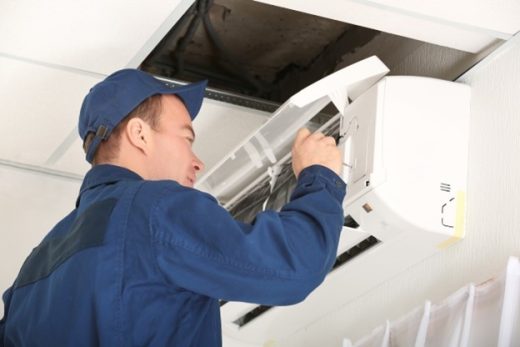
HVAC Systems in Modern Architecture
5 great advice from top rated HVAC contractor
Buildings
Residential Architecture Articles
Comments / photos for the How Smart HVAC Technology Enhances Modern Architectural Design – Buildings temperature control page welcome.

